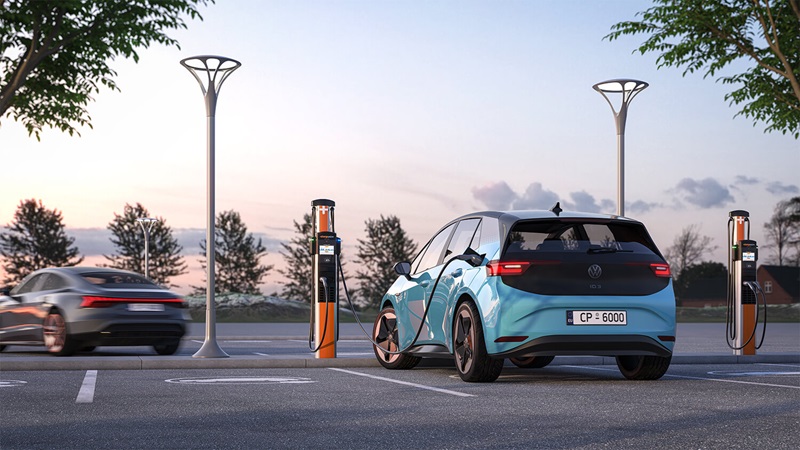Effects of Electric Vehicle Charging Stations on the Economic Vitality of Local Businesses

The rise of electric vehicles (EVs) has created a growing demand for efficient and accessible charging solutions. Among these, DC fast charging stations play a pivotal role, offering rapid energy replenishment for EVs compared to slower AC chargers. This comprehensive guide explores everything you need to know about DC fast charging, including its technology, benefits, challenges, and tips for optimal use.
What Is DC Fast Charging?
DC fast charging (Direct Current fast charging) is a technology that delivers high power directly to an EV’s battery, enabling quick energy transfer. Unlike Level 1 and Level 2 chargers, which use AC (alternating current) and require the vehicle’s onboard converter to transform AC into DC, DC fast chargers bypass this step by delivering DC power directly. This significantly reduces charging time, making it ideal for long-distance travel and high-usage scenarios.
- Power Output: Typically ranges from 50 kW to 350 kW or more, depending on the station and vehicle compatibility.
- Charging Speed: Can provide 80% charge in as little as 20–40 minutes for most EVs.
Key Components of dc fast charging station
- Power Modules: Convert high-voltage AC from the grid into DC.
- Charging Connectors: Common standards include:
- CCS (Combined Charging System): Widely used in Europe and North America.
- CHAdeMO: Popular in Japan and compatible with several global models.
- Tesla Superchargers: Proprietary to Tesla vehicles but increasingly open to other EVs.
- Cooling Systems: Prevent overheating of equipment and cables during high-power charging.
- User Interface: Touchscreens or apps to manage sessions, monitor progress, and facilitate payment.
Advantages of DC Fast Charging
- Speed and Convenience: DC fast chargers are significantly faster than Level 1 (up to 2 kW) and Level 2 (up to 22 kW) chargers, making them indispensable for long trips or commercial EVs.
- Increased Range Confidence: Rapid charging reduces range anxiety, allowing EV owners to travel greater distances without extended downtime.
- Commercial Opportunities: Businesses offering DC fast charging attract customers who spend time and money while their vehicles charge.
- Scalability: High-power stations are future-proof, accommodating larger EV batteries and faster charging requirements.
How to Use a DC Fast Charging Station
- Locate a Station: Use apps like PlugShare or ChargePoint to find nearby stations compatible with your EV.
- Check Compatibility: Confirm the station supports your vehicle’s connector type and power requirements.
- Start Charging:
- Plug the connector into your vehicle
- Follow on-screen instructions or use an app to initiate the session
- Monitor Progress: Most stations display charging status, or you can track it through a mobile app.
- Disconnect and Pay: End the session via the interface, unplug the charger, and complete any necessary payment.
Best Practices for EV Owners
- Charge Strategically: Use DC fast charging primarily for long trips or when you need a quick top-up. For daily use, Level 2 charging is more economical and better for battery health.
- Plan Ahead: Identify stations along your route to avoid delays and ensure connector compatibility.
- Stay Informed: Keep up with charging network updates and EV advancements to maximize the benefits of fast charging technology.
The Future of DC Fast Charging
The industry is rapidly evolving, with innovations aimed at making DC fast charging even faster, more efficient, and accessible. Key trends include:
- Ultra-Fast Charging: Stations offering power up to 500 kW to accommodate next-generation EVs.
- Wireless Charging: Prototypes and pilot projects are exploring contactless charging systems for ultimate convenience.
- Renewable Integration: Combining charging stations with solar panels and energy storage systems to reduce grid dependency.
Governments and private enterprises are heavily investing in charging infrastructure to support the global shift to electric mobility. Initiatives like the U.S. Bipartisan Infrastructure Law and the EU’s Alternative Fuels Infrastructure Regulation are driving widespread deployment of DC fast chargers.
The bottom-line
DC fast charging is a cornerstone of the EV ecosystem, enabling rapid energy replenishment and supporting the transition to sustainable transportation. While it comes with challenges like high costs and energy demands, advancements in technology and infrastructure are making fast charging more accessible and efficient. By understanding its operation, benefits, and best practices, EV owners and stakeholders can make the most of this transformative technology.
Whether you’re an EV driver, a business owner, or a policymaker, embracing DC fast charging is a crucial step toward a cleaner, electrified future.